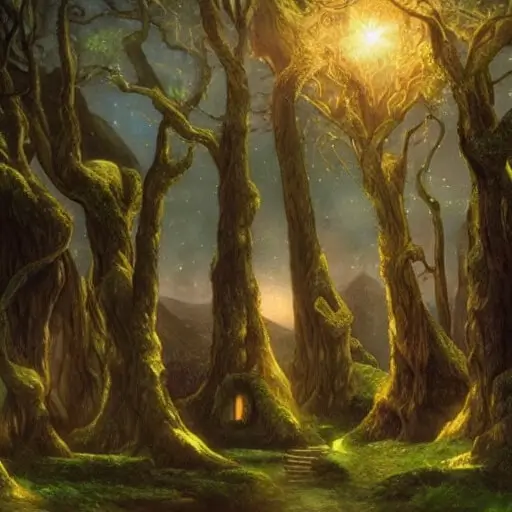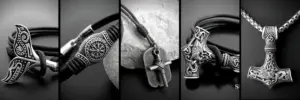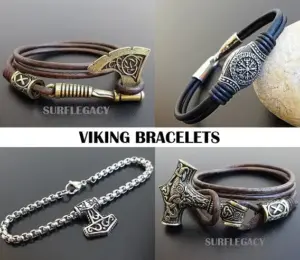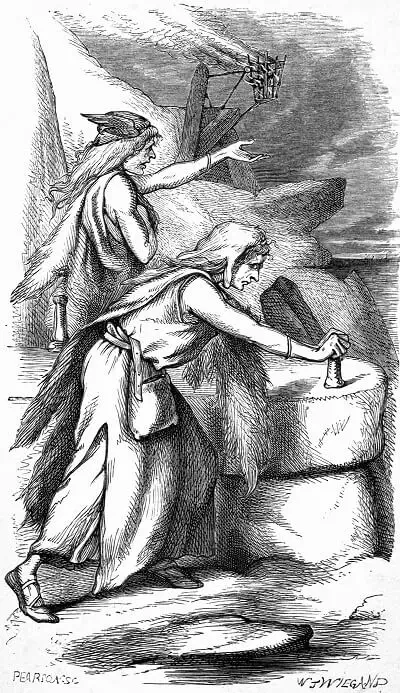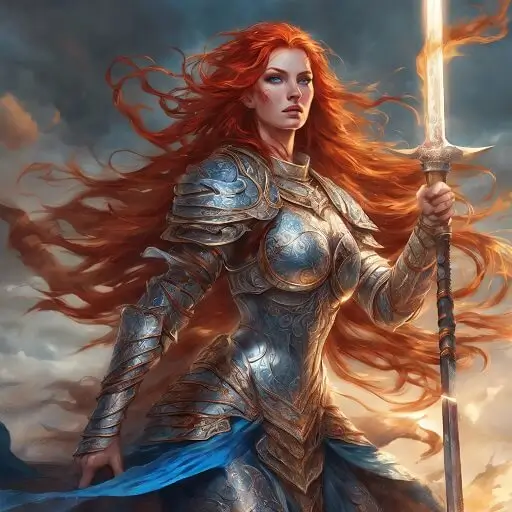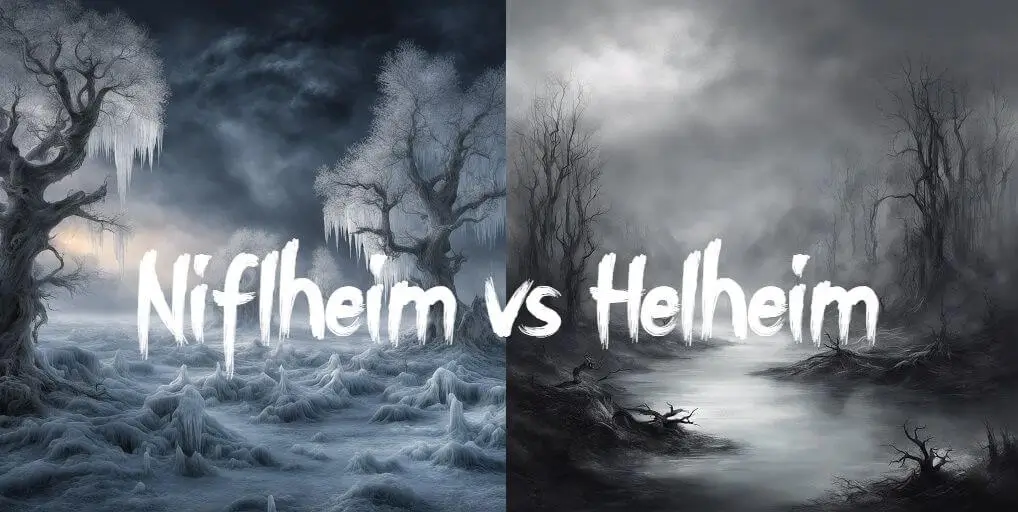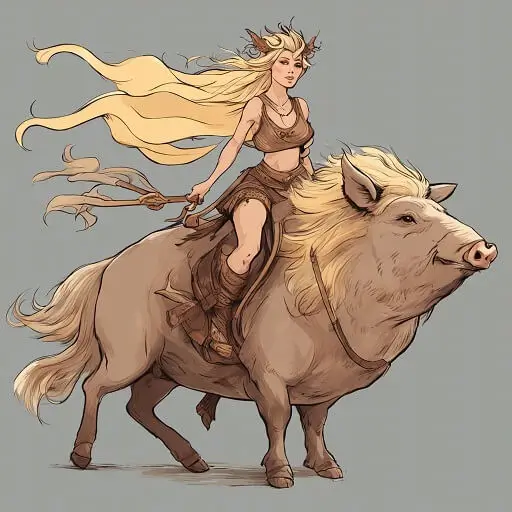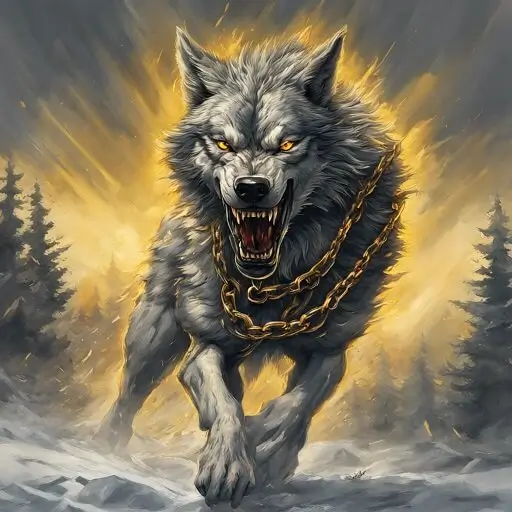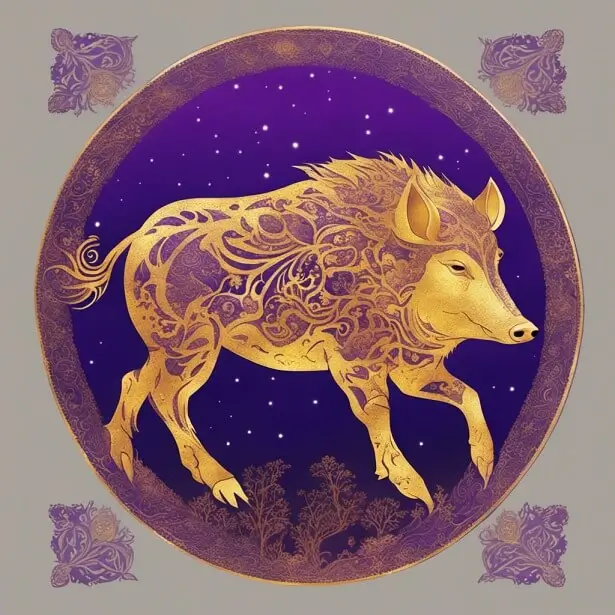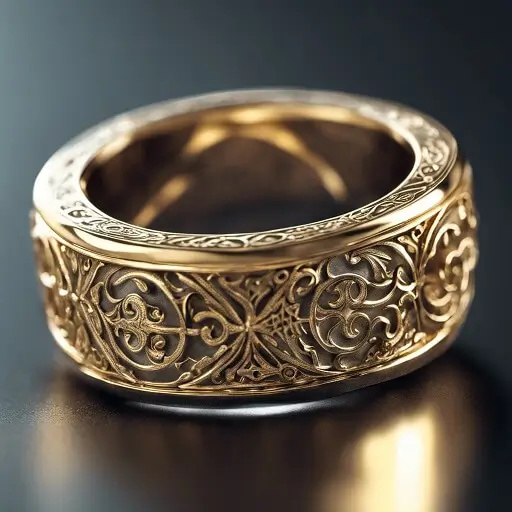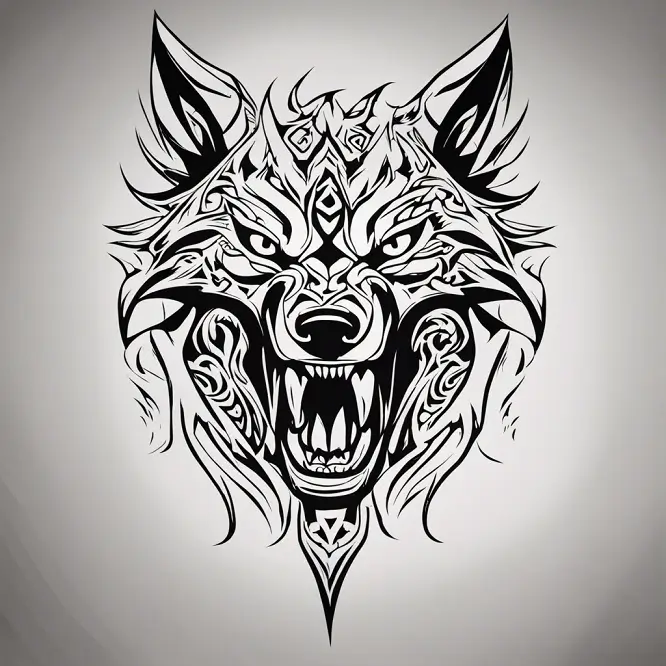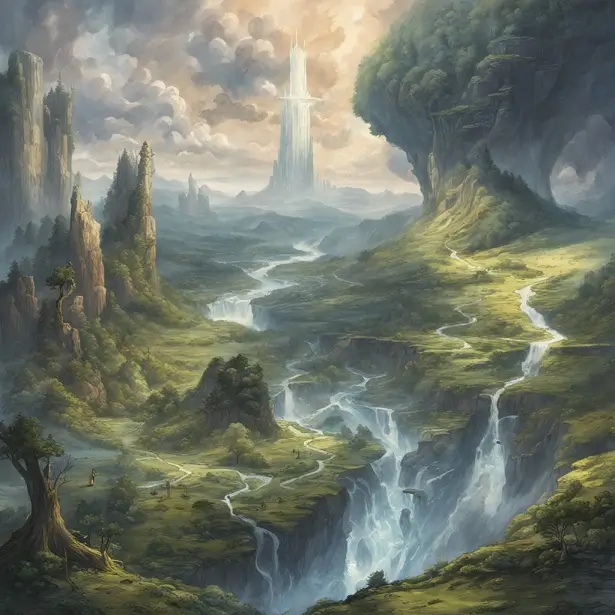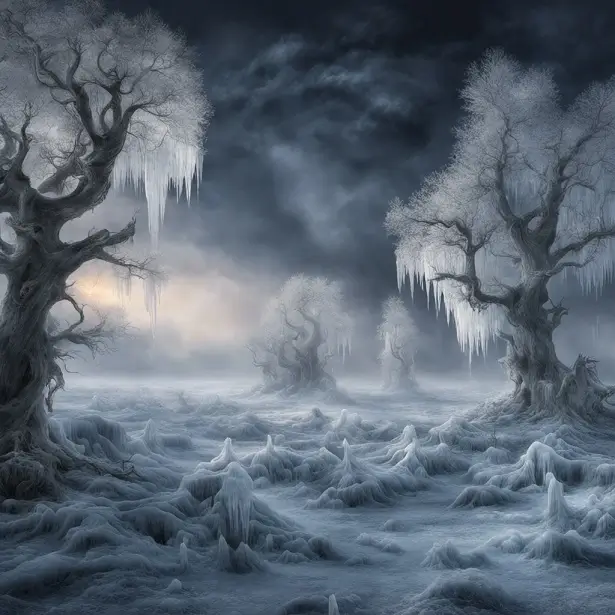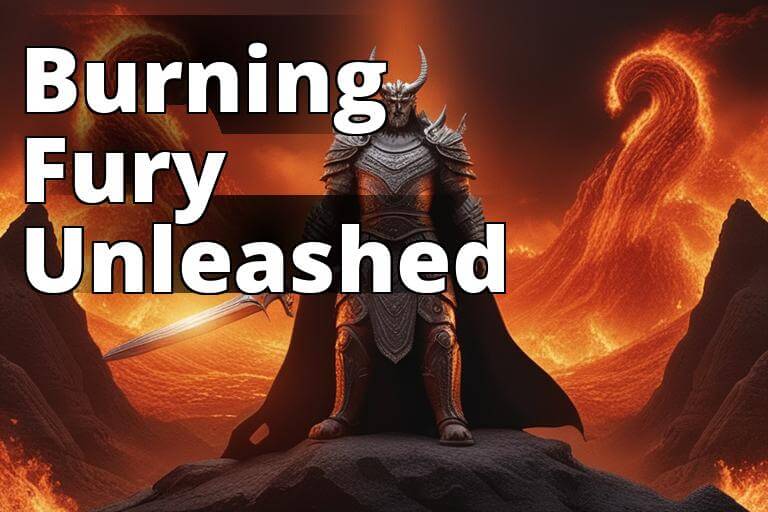In Old Norse cosmology, Alfheim (pronounced “ALF-hame;” Old Norse Álfheimr, “The Homeland of the Elves” or “Elfland”) was one of the Nine Worlds, the mystical home of the elves. Though seldom mentioned directly, Alfheim was an integral part of Norse mythology and religion.
Key Takeaways:
- Alfheim was the elven realm in Norse mythology, one of the Nine Worlds in the cosmos.
- Associated with radiant light, it was the home of the luminous Light Elves (Ljósálfar).
- The Vanir god Freyr mysteriously ruled over Alfheim and its inhabitants.
- Though seldom described, Alfheim was imagined as a celestial abode of beauty and light.
- It endures as a magical elven land in modern popular culture.
Etymology and Meaning
The name Álfheimr derives from the Old Norse words álfr meaning “elf” and heimr meaning “home” or “world.” It translates literally to “home of the elves” or “world of the elves.”
Alfheim is also called Ljósálfheimr (Old Norse Ljósálfaheimr, “home of the light elves”), referring to the luminous Light Elves (Ljósálfar) who inhabited the realm. The other group of elves in Norse lore were the Dark Elves (Dökkálfar).
Description in the Sources
Very little descriptive detail about Alfheim survives from ancient Norse texts. However, from the attributes of its inhabitants, scholars have inferred it was a beautiful, radiant realm filled with light.
The 13th century Icelandic historian Snorri Sturluson described the Light Elves as “fairer than the sun to look at,” so their home realm must have been equally resplendent. He also calls Alfheim “glorious,” likening it to heaven.
Though not geographically located in the texts, some scholars propose the lush coastal region between Sweden and Norway as a real-world counterpart to mythic Alfheim. The attractive inhabitants of this area may have inspired the supernaturally beautiful Light Elves.
The Poetic Edda poem Grímnismál in stanza 5 refers to Alfheim as:
Ydalir call they | the place where Ull
A hall for himself hath set;
And Alfheim the gods | to Freyr once gave
As a tooth-gift in ancient times.
Implying it was a gift for the gods when they were children. This reflects the practice of giving gifts to infants when they cut their first tooth, which endures today in Nordic countries.
Place in Norse Cosmology
Alfheim was one of the Nine Worlds of Norse cosmology, parallel planes linked by the great World Tree Yggdrasil. It was a high heavenly realm positioned in the boughs of Yggdrasil near Asgard, home of the gods.
Vanaheim, the home of the Vanir gods, was also located in this celestial region of the cosmos. Alfheim’s proximity to the domains of such powerful divine beings reflects the elves’ high status in Norse myth.
Though the Nine Worlds are never clearly listed in the sources, historians agree Alfheim was undoubtedly among them given the prominence of elves in Old Norse religion.
The Nine Worlds of Norse Cosmology
| Realm | Inhabitants | Location |
|---|---|---|
| Alfheim | Light Elves | Heavenly realm in Yggdrasil |
| Asgard | Aesir gods & goddesses | Heavenly realm in Yggdrasil |
| Vanaheim | Vanir gods & goddesses | Heavenly realm in Yggdrasil |
| Midgard | Humans | Middle terrestrial realm |
| Jotunheim | Giants | Outermost rim |
| Niflheim | Mist world | Primordial icy realm |
| Muspelheim | Fire giants | Primordial fiery realm |
| Helheim | Dishonored dead | Underworld realm |
| Svartalfheim | Dwarves/Dark Elves | Underground |
The Elves of Alfheim
In Norse belief, elves possessed great beauty, magical powers, and elevated stature. They were divided into the radiant Light Elves who lived in Alfheim and the darker Dökkálfar who dwelt underground.
The Light Elves inspired art, music, poetry, and other refinements of civilization. However, they also disrupted human lives with illness and misfortune when displeased. Gods and goddesses frequently took elven lovers, attesting to their seductive supernatural charm.

Dark Elves were likely synonymous with the craftsman race of Dwarves who inhabited Svartalfheim. They averaged human height but were particularly skilled smiths and miners. Both groups of elves interacted extensively with gods, humans, and other beings.
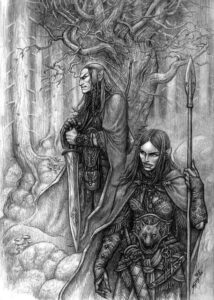
The Two Types of Elves
| Light Elves (Ljósálfar) | Dark Elves (Dökkálfar) |
|---|---|
| – Inhabited Alfheim | – Likely dwelled in Svartalfheim with dwarves |
| – Supernaturally beautiful and luminous, “fairer than the sun” | – Darker complected, not as attractive as Light Elves |
| – Associated with enlightened qualities – art, music, poetry, magic, creativity, fertility | – Skilled craftsmen and smiths |
| – Affinity with the Vanir gods & goddesses | – Affinity with the Aesir gods & goddesses |
| – Capricious nature – helped and healed humans but also brought illness & misfortune | – More benevolent nature, forged mythical weapons and treasures |
| – Inspired refinement of civilization | – Excelled at mining, metalsmithing, stonework |
| – Seductive and alluring to gods, goddesses, and humans | – Averaged human height, unlike dwarves |
| – Potential for interbreeding with humans to produce children with magical gifts | – Potential for interbreeding with humans |
| – Freyr named as ruler of Alfheim, though reason unclear | – Unclear if dwelled in Alfheim or solely underground in Svartalfheim |
| – Possibly represented concepts of light, nobility, chaos | – Possibly represented concepts of darkness, earth, order |
Freyr’s Rule Over Alfheim
The Vanir god Freyr, who embodied prosperity, virility, and fair weather, was named as the ruler of Alfheim in the Poetic Edda poem Grímnismál. The reason for his lordship over the elven realm is unexplained, but it clearly connects Alfheim to the Vanir’s magic and fertility.
As a child, Freyr was gifted Alfheim by the Aesir gods as a “tooth-gift” when he lost his first tooth. He also became ruler after he was exchanged to Asgard as a hostage following the Aesir-Vanir War. These stories reveal the deep, mysterious bonds between the Vanir and the elves.
One interpretation is that Freyr may have been an elf who rose to become a god. This could explain his strong affiliation with Alfheim and its inhabitants. However, the origins of his alignment with the elven world remain ambiguous.
References in Primary Sources
Alfheim is directly mentioned in two primary sources for Norse mythology:
Grímnismál
This Eddic poem first names Alfheim in stanza 5 as one of twelve divine dwellings:
Ydalir call they the place where Ull A hall for himself hath set; And Alfheim the gods to Freyr once gave As a tooth-gift in ancient times.
Gylfaginning
In Snorri Sturluson’s prose Edda, Alfheim appears again in the description of Gimlé, the heavenly hall that will survive Ragnarök:
It is said that another heaven is to the southward and upward of this one, and it is called Andlangr; but the third heaven is yet above that, and it is called Vídbláinn, and in that heaven we think this abode [Gimlé] is situated… but we believe that none but Light-Elves inhabit these mansions now.
Did Vikings believe in Elves?
In the pre-Christian religion of the Norse and other Germanic peoples, elves held an eminent position. The Old Norse word for these beings was ‘alfar.’ Elves were described as supernaturally attractive humanoids possessing magical talents beyond mortals.
The Vikings conceived of light elves who were radiant and benevolent, and dark elves who were subterranean craftsmen. Sagas tell of interbreeding between elves and exceptional human heroes, producing children with intuitive gifts like prophecy.
The light elves inhabited Alfheim, one of the Nine Worlds central to Norse cosmology. The Vanir god Freyr mysteriously ruled over Alfheim, revealing deep bonds between the elves and Vanir gods like Freyr and Freyja who practiced magic called seidr.
The elves were associated with nature, fertility, health, music and poetry – influences on civilization. They also brought illness and chaos when disrespected.
The contrast between dark and light elves later influenced Christian views of angels and demons. But in Norse myth, both kinds of elves held nuanced roles. Overall, elves were integral to the Viking supernatural worldview and cultural identity.
The Enduring Mystery of Alfheim
Despite its minor role in the surviving tales, Alfheim’s presence as one of the Nine Worlds indicates it was an integral part of the Norse cosmological system. The mysterious connections between the realm of the elves, its luminous inhabitants, and the god Freyr reveal deeper mythic significance that has now been lost.
The lack of surviving details or stories allows modern culture to reimagine Alfheim in different fantastical ways. But elements of its primordial mystique and beauty still echo through the myths, hinting at forgotten tales of elven magic under the northern skies.
Alfheim in Popular Culture
Though seldom described in Norse mythology itself, Alfheim has been vividly imagined in modern popular culture:
- In the Marvel comics universe, Alfheim is a paradise of candy-fruit trees, springs of wine, and gardens, inhabited by elves as well as fairies and pixies.
- It is a major setting in the 2018 video game God of War, envisioned as a realm disrupted by constant warfare. The Alfheim Lake of Light is a central quest location.
- The Japanese anime series Is It Wrong to Try to Pick Up Girls in a Dungeon? imagines Alfheim as the land of the fairies ruled by the goddess Freya.
- In the television series Vikings, the seer prophesies that Ivar the Boneless has the power to lead an invasion force to conquer Alfheim and its elves.
Alfheim – FAQs
Where was Alfheim located?
In the Norse cosmological system, Alfheim was located in the heavenly branches of the World Tree Yggdrasil, near the realms of Asgard and Vanaheim.
Who inhabited Alfheim?
Alfheim was inhabited by the Light Elves, beautiful and luminous beings who inspired art, music, poetry and other refinements of civilization.
Why did Freyr rule Alfheim?
The reasons for the fertility god Freyr ruling over the elven realm of Alfheim are unclear, but suggest a deep mythical bond between the Vanir gods and the elves.
What did Alfheim look like?
No physical description survives, but scholars speculate Alfheim was a glorious, radiant realm suffused with light, reflecting the luminous beauty of its Light Elf inhabitants.
Is Alfheim mentioned often in Norse myths?
No, Alfheim is rarely mentioned directly in the surviving sources of Norse mythology. But its presence as one of the Nine Worlds indicates it was an integral part of Norse cosmology.
What are the 9 realms of Norse mythology?
The Nine Worlds of Norse cosmology are Asgard, Vanaheim, Alfheim, Midgard, Jotunheim, Niflheim, Muspelheim, Helheim, and Svartalfheim.
What language do they speak in Alfheim?
No sources describe the language used in Alfheim. As the realm of the elves, it can be presumed they spoke the Old Norse language of the ancient Norse and Germanic peoples.
Why can’t Freya go to Alfheim?
There are no sources indicating the goddess Freya was unable to go to Alfheim. As a Vanir goddess, she likely could travel freely between the interconnected realms.
Where is Alfheim in real life?
Alfheim is a mythical realm and does not exist in a literal geographic location. Some scholars propose ancient Scandinavians may have associated it with the attractive people of southern Norway and Sweden.
Conclusion
Though the surviving details about the elven realm are scant, its presence across multiple ancient sources reflects its integral importance in Old Norse religion.
The celestial land of the elves clearly captivated the Viking imagination, even if its original myths are now lost. Alfheim represents the power of myth to inspire ongoing creativity and reinvention, as its magic continues to be reimagined in new visions of elven beauty and light.
See also:
The Magical Realm of Asgard: Home to the Aesir in Norse Mythology
Niflheim: The Primordial Realm of Ice and Mist in Norse Mythology
Vanaheimr: The Realm of the Vanir Gods
Muspelheim: The Realm of Fire in Norse Mythology
Helheim: The Norse Mythological Realm of the Dead
Shop Norse Jewelry
Are passionate about Norse Mythology?
Finding the ideal piece of Norse Jewelry can be challenging and time-consuming, especially if you lack inspiration or don’t know where to look.
Surflegacy, has you covered. We have a wide range of Handmade Jewelry in various styles, shapes, colors, and materials, to accentuate your Norse spirit and look. Do not hesitate to visit our selection HERE
Whatever you wear, you’ll find the ideal trendy piece to complement your wardrobe. Our jewelry is designed to be worn every day, no matter where you go or what season is. Are you ready to step up your wardrobe game?

